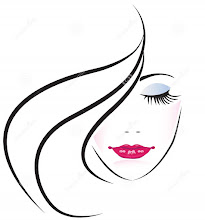A lifetime of sun exposure can cause
wrinkles, age spots, and other skin problems as well as increase the risk of skin cancer.
One of the most important ways to
take care of your skin is to protect it
from the SUN.
Believe it or not, skin is your body’s
largest organ!
All skin is made up of three primary
layers:
-Epidermis (top layer)
-Dermis (middle layer)
-Subcutaneous layer or hypodermis
(lower layer)
Your skin has several very important
tasks:
-Protect muscles, bones, and organs
of your body
-Regulate body temperature
-Encases the nerves that enable your
sense of touch and relay messages (like hot, cold,
comfort, and pain) to your brain.
-What skin looks like with a sun
burn.Sunburn increases the body’s temperature and sensitivity to hot and cold.
-Ultraviolet radiation damages layers
and functions of the skin.
-Ultraviolet (UV) Radiation
There are 2 types of UV radiation:
UV
A rays
A rays
-
• have long waves that penetrate
deep into the lower layers of skin
(dermis and hypodermis)
•damage the connective tissue, causing
skin to lose its tone
•lead to premature aging and
wrinkles
UV
-
B rays
•have short waves that are powerful
and penetrate the upper skin layers (epidermis)Too much UVB causes the pigment to
become red, called sunburn
•This alarms the skin cells to
repair the damage
•But, the more frequent and intense
the sunburn, the less effective the repair process becomes.
•lead to modified genetic material,
chronic skin damage, and cause early stages of
cancer Effects of Sun Exposure
Short term effects
•Sunburn
•Sun poisoning
•Heat Rash
•Heat Stroke
•Dehydration
•Freckles
•Dry ski
Long term effects
•Broken blood vessels
•Premature aging
•Dark spots
•Wrinkles
•Leathery, rough, and droopy skin
•CANCER
Skin Care
Skin care begins with a healthy
lifestyle.
• Drink plenty of water
• Eat a balanced diet
• Take a daily vitamin
• Exercise regularly
• Get enough sleep
• Avoid smoking
• Avoid use of tanning beds
• Minimize use of alcohol
• Manage daily stress
The Skin: This is about human skin three type.
1. Every day Keeping water and essential
nutrients in and unwanted, toxic substances out.
2. Regulating the temperature for
warming and cooling.
3. Repairing damage from cuts,
burns, environmental insults, or other trauma.
4. Sun.
5. Climatic changes: heat, cold,
high or low humidity (moisture level in the air).
6. Physical abuse: friction from chafing,
rubbing, shaving.
7. Products that contact the skin
like soaps, detergents, cleaning products, paint, grease, solvents, rubbing
alcohol, and cosmetics.
8. Water (extended exposure to water
damages the skin).
9. Lifestyle: smoking, drinking
alcohol, lack of sleep.
Skin Care1. Cleansing: Skin Cleansing use a mild cleanser. Remove facial make up completely. Use lukewarm water for all cleansing. Rinse the skin thoroughly to remove cleansing materials from the skin surface. Gently pat dry and avoid rubbing.
2. Moisturizing: Skin MoisturizingIn "moisturizing," water is added to the skin. Moisturized skin is more flexible and pliable than dry skin, 1. improve hydration , 2. add a"protective" or occlusive layer on the skin surface to help hold moisture within the top layers and keep it from being lost to the environment.
3. Cancer Awareness: We advise periodic evaluations of any marks, moles, or pigmented areas by a trained health care professional. Any mole that changes in size or has an irregular border must be checked. Prevention of skin cancer involves avoiding sun damage and detecting trouble spots early. Be aware of changes in your skin and have them evaluated spots early. Be aware of changes in your skin and have them evaluated.
4. Adult Skin Care: An individual's skin care regimen should include basic elements, as well as those tailored to specific needs and lifestyles. the early adult (20-35 years), we recommend cleansing with a non-soap product and rinsing well and moisturizing, particularly in cold weather. Application of sun screens and sun blocks on a daily basis at an SPF value of 15 is essential. For early signs of damage, such as uneven pigmentation or fine wrinkles, a retinoid product should be considered. Control of acne is often important for this age group. For the middle adult years (35-65), cleansing, moisturizing, sun protection, and use of retinoids are recommended. Acne can be problematic for this group, as well as early adults and teenagers. For persistent acne, various medications and treatments are available. Individuals may consider restorative techniques, such as the chemical peel, dermabrasion, or laser resurfacing, to correct the damage caused by sun exposure.
Don’t miss out on the collection at beauty & fashion
Visit Our Facebook Page
Follow & Share our Blog http://beautyqueen255.blogspot.in/





Pretty good post. I just stumbled upon your blog and wanted to say that I have really enjoyed reading your blog posts. Any way I'll be subscribing to your feed and I hope you post again soon. Big thanks for the useful info. Buy opioids online with bitcoin Australia
ReplyDeleteWow, What an Outstanding post. I found this too much informatics. It is what I was seeking for. I would like to recommend you that please keep sharing such type of info.If possible, Thanks. canada tourist visa
ReplyDelete